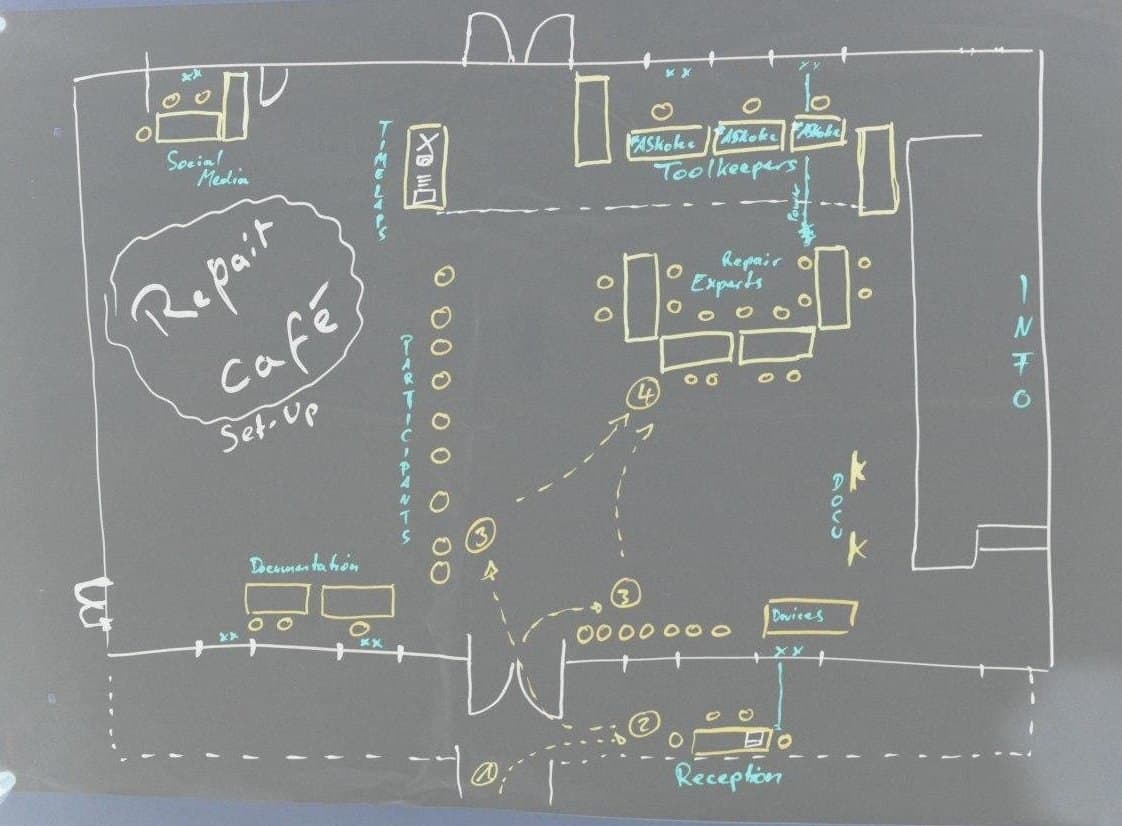Exploring how repair culture and innovative solutions can help conflict-affected communities overcome challenges posed by low mobile network connectivity.
Take Action
- Engage with your community to start a repair café or community workshop to fix devices.
- Ask for donations of tools and resources from the local communities and elsewhere.
- Teach others how to repair, and use tools.
- Partner with organizations to bring repair kits and offline resources to your community.
Introduction
Conflict-affected communities often face unique challenges, including broken communication devices and unreliable mobile network connectivity. These obstacles can hinder access to vital information, services, connections, and communication with loved ones. This article provides insights and practical steps to repair devices and navigate low connectivity challenges, helping communities access information and stay connected.
Repair Café as a means to combat Repair and Low Mobile Network Connectivity issues.
The Lack of repair services and low connectivity doesn’t have to mean the end of life for a device. Communities can be creative and develop innovative solutions using available means and resources to maintain communication, access services, and access vital information.
Repairing devices is the first step. Integrating low-cost connectivity solutions creates a more robust support system. Workshops and community repair cafés can double as spaces for knowledge exchange, learning, access to information, networking, and social cohesion.
Community Repair Cafés.
A community repair cafe is a space with essential tools and equipment run by volunteers who are willing to share knowledge and skills with others. Community members can bring in their broken and not working electronic devices for fixing or repair at a free cost. These electronic devices include smartphones, cell phones, radios, power extension cables, solar panels, printers, and solar lights. A repair café enables knowledge and skills sharing among conflict-affected communities through a Do IT Yourself (DIY) approach by bringing people together including those with knowledge and skills in the repair of different items and those who have no prior knowledge and skills. Those with no knowledge are paired with the experts.
Repair cafés not only helps people fix important things that they rely on in their everyday lives, but it also creates social space for people to get together, connect, and have fun by interacting or listening to music acting as a space for psychosocial support hence their mental maintenance.
Essential Tools, Equipment, and Resources to Set up a Repair Cafe
Setting up a repair requires tools, materials, equipment, and human resource
Tools
As an individual or group of people, you can choose any tool based on the options available at a time.
General minimal toolset
Screwdrivers set, soldering irons, sucker, digital multimeter, laptop computer, smartphone, headlamp or flashlight, and magnifying glass.
Materials
Connecting wires, soldering paste/grease, notebooks, pens, flip charts, masking tape, and some few electrical components
(resistors, diodes, capacitors, mouthpieces, earpieces, charging ports, and battery terminals for phones, phone screens, Operating systems, and application software – Windows, and Linux, Microsoft Office suite, LibreOffice, Media players, Games, and Antivirus)
Equipment
Portable generator or Solar system, chairs, and tables.
Human Resources
Volunteers with different skill sets in repair and documentation
How to Run a Minimal Community Repair Café event.
- Planning and Mobilization
Engage community members by collaborating with local leaders, churches, and the community. Identify the resources needed. Identify repair volunteers, and clearly communicate the event details, including the venue, time, and types of devices that will be repaired by the volunteers.
- Reception and Registration
At the reception desk (Table 1), a volunteer will be responsible for welcoming community members and registering the broken devices brought in by community members.

- Room Setup and Expert Roles
The workspace will be divided into specialized sections
- Solar and Radio Repairs: Handled by one repair technician.
- Small Electronics: A second technician will repair phones and lighting systems.
- Computers: A third repair technician will manage computer repairs, including hardware and software issues.
- Repair Process
Repairs will begin once all devices are registered and their numbers are established at the reception.
- Support Team
- One team member will document the event by taking photos and video clips using a camera or smartphone.
- Another member will handle online documentation, ensuring that the activities are streamed or shared live for those following remotely.
- Event Flow
- Before repairs commence, a volunteer will introduce the setup and activities to the offline/online audience.
- During the event, one volunteer will interview a community member about the impact of the Repair Café.
- Team members will contribute comments and updates on the activities, both in-person and online.
- Closing
The event will conclude with closing remarks by the host, summarizing the outcomes and thanking participants.
Resources: Learn more about repair cafes
- https://github.com/ASKnet-Open-Training/CommunityRepairCafe
- https://www.repaircafe.org/en/
- https://www.croix-rouge.fr/actualite/au-coeur-du-repair-lab-ici-jai-trouve-une-famille
- iFixit (www.ifixit.com): Guides for repairing phones and laptops.

Leave a Reply